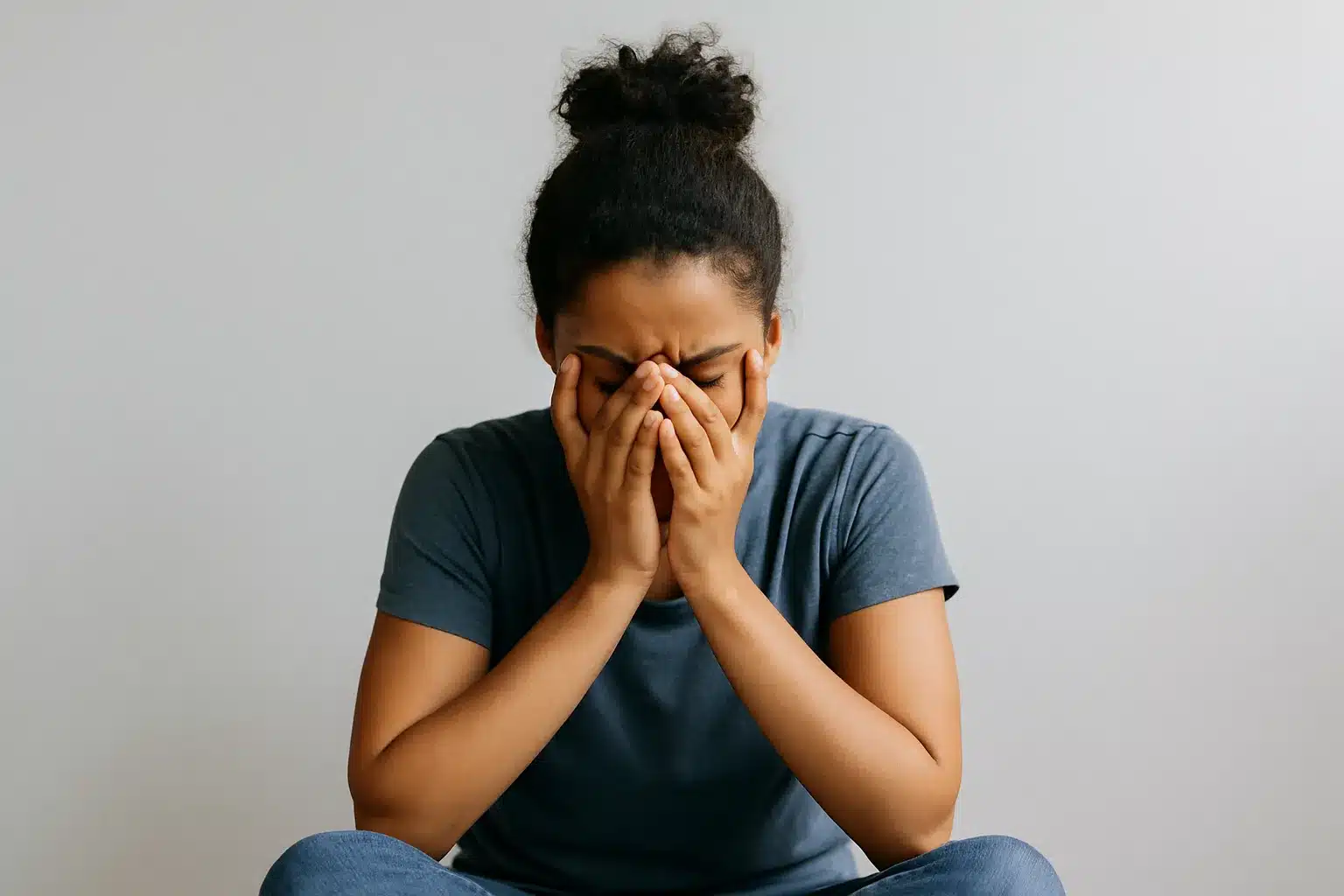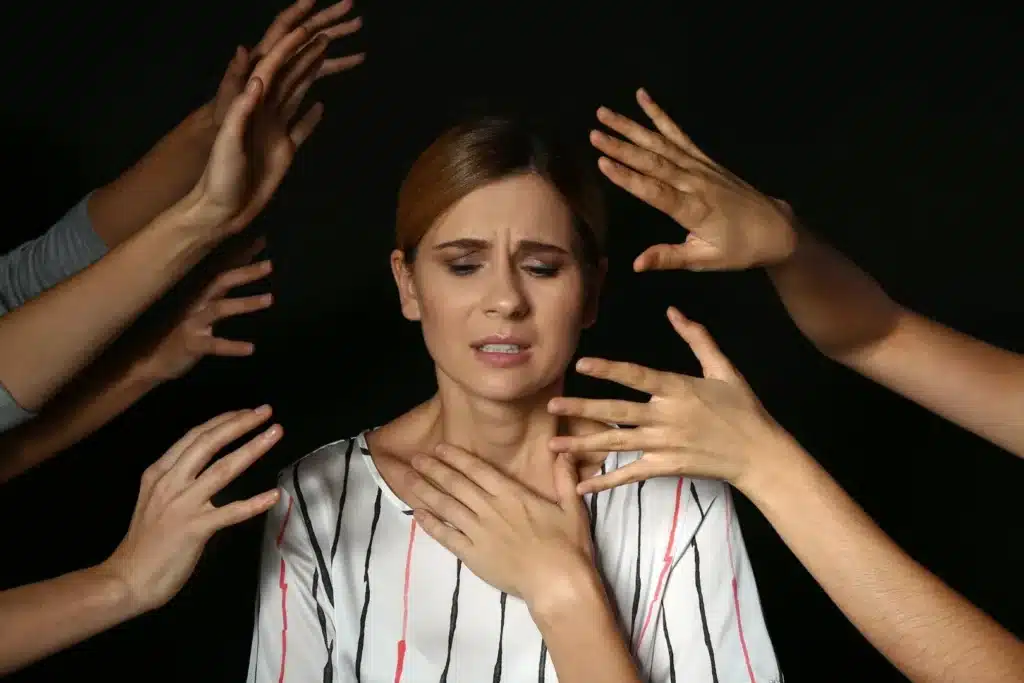Anat Joseph LCSW, PsyA, offers individualized therapy for clients navigating anxiety-related challenges. In this article, she looks at the different types of anxiety disorders.
She helps readers understand their symptoms, causes, and treatment options. If you feel anxious every day or scared in social situations, this guide offers a clear and helpful way to move forward.
Anxiety disorders are among the most common mental health conditions. They affect people of all ages and can interfere with work, relationships, and daily life.
These disorders include various anxiety types, each with specific symptoms and treatment paths. Understanding the types of anxiety disorders helps individuals and family members recognize early signs and seek appropriate care.
Understanding Anxiety as a Mental Illness
Anxiety Mental Illness Definition
Anxiety is classified as a mental illness when it causes significant distress or limits a person’s ability to function. It involves persistent worry or fear that goes beyond everyday stress.
This condition is recognized in the DSM-5 as part of a broader group of mental disorders.

Is Anxiety a Mental Illness or Disability?
Anxiety is a mental illness and, in some cases, may also qualify as a disability. If symptoms prevent someone from managing basic tasks or holding a job, accommodations might be available under certain legal protections.
The severity and impact of the symptoms determine whether anxiety meets the criteria for a mental disability.
Psychological Term for Anxiety
Clinicians use the term “anxiety disorder” to describe chronic and excessive fear or worry. It reflects a mental health condition marked by emotional distress, physical symptoms, and impaired daily function. This term helps distinguish clinical anxiety from ordinary nervousness.
Main Categories and Symptoms of Anxiety
What Are the 4 Main Types of Anxiety?
The four core anxiety categories include generalized anxiety disorder, panic disorder, social anxiety disorder, and specific phobias. Each type affects people differently but shares a common thread of excessive fear and avoidance.
Common Emotional and Physical Symptoms
Symptoms of anxiety often involve both mind and body. Emotional signs include restlessness, irritability, and intense fear. Physical symptoms may involve sweating, muscle tension, rapid heartbeat, or dizziness—especially during panic attacks.
How Anxiety Is Diagnosed
Mental health professionals diagnose anxiety using clinical interviews, symptom checklists, and diagnostic guidelines. They assess how long symptoms last, their severity, and how they interfere with social situations or daily activities.
Diagnosis helps tailor the right approach to treat anxiety effectively.
What Is the Rarest Anxiety?
Selective mutism is considered one of the rarest anxiety disorders. It usually appears in childhood and involves a consistent failure to speak in certain settings, despite being able to speak in others. Though uncommon, it requires specialized care and support.
Different Types of Anxiety Disorders
Generalized Anxiety Disorder
This disorder involves chronic worry about everyday issues. People often feel anxious without a clear cause and struggle to control their thoughts. It can lead to fatigue, concentration problems, and sleep disturbances.
Panic Disorder
Panic disorder is marked by recurring panic attacks—sudden episodes of intense fear. These attacks can involve chest pain, shortness of breath, or a sense of losing control. Even the fear of having another attack can affect daily life.
Social Anxiety Disorder
Also known as social phobia, this condition causes a strong fear of social situations. People may avoid public speaking, eating in front of others, or meeting new people. Fear of embarrassment is often central.
Specific Phobias
These involve intense fear of particular objects or situations, such as flying, heights, or animals. People with phobias often go to great lengths to avoid their triggers, even if they recognize the fear as irrational.
Separation Anxiety Disorder
Common in children but also seen in adults, this disorder causes excessive fear about being apart from loved ones. It can lead to school refusal, sleep issues, or clingy behavior in family relationships.
Agoraphobia
Agoraphobia involves fear of places where escape might be hard during a panic attack. This includes crowded areas, public transport, or open spaces. In severe cases, people may avoid leaving home altogether.
Selective Mutism
This disorder mainly affects children and is tied to social anxiety. A child may speak freely at home but stay silent in school. Early treatment helps improve communication and reduce long-term stress.
Anxiety in Children
Types of Anxiety Disorders in Children
Children may experience several different kinds of anxiety, including social anxiety, separation anxiety, and phobias. Symptoms often appear as clinginess, irritability, or refusal to engage in certain settings.
School Anxiety and Social Fears
Fear of school, peers, or performance pressure can trigger intense anxiety in children. They may feel anxious about being judged or separated from parents. Early signs should be addressed with support from caregivers and professionals.
When to Seek Help for a Child
If a child’s anxiety affects their sleep, behavior, or learning, it’s time to consult a therapist. Anat Joseph works closely with children and families to assess their needs and develop tailored treatment plans.
Causes and Risk Factors
Genetic and Biological Causes
Some people are more likely to develop anxiety due to their biology. Brain chemistry and inherited traits may affect how they respond to stress. Family history of mental illness also plays a role.
Environmental Stress and Trauma
Stressful events—like bullying, family conflict, or trauma—can trigger anxiety. Children, teens, and adults may carry these experiences into future relationships and daily challenges, leading to chronic anxiety symptoms.
Anxiety Disorder Treatment
Therapy and Counseling
Cognitive behavioral therapy (CBT) is the most common treatment for anxiety. It helps people reframe negative thoughts and reduce avoidance behaviors. Anat Joseph uses evidence-based therapy adapted to each client’s age and background.
Medication Options
Some anxiety disorders may be treated with medications, including SSRIs or anti-anxiety medications. These are usually combined with therapy to manage physical symptoms and support long-term recovery.
What Is the 3 3 3 Rule for Anxiety?
This grounding technique helps manage anxiety in the moment. It involves naming 3 things you see, 3 things you hear, and moving 3 parts of your body. It can calm the mind during sudden distress.
What Is the #1 Worst Habit for Anxiety?
Avoidance is one of the most harmful habits. Skipping feared situations may offer short-term relief but reinforces long-term fear. Exposure through therapy can help reverse this cycle.
Lifestyle Changes and Daily Habits
Simple habits like regular sleep, movement, and limited caffeine can help treat anxiety. Mindfulness and journaling also support emotional balance.
When to Seek Professional Help
If anxiety limits your work, school, or relationships, it’s time to seek help. A mental health provider like Anat Joseph can guide treatment and offer support tailored to your needs.
Because Your Happiness Matters.

